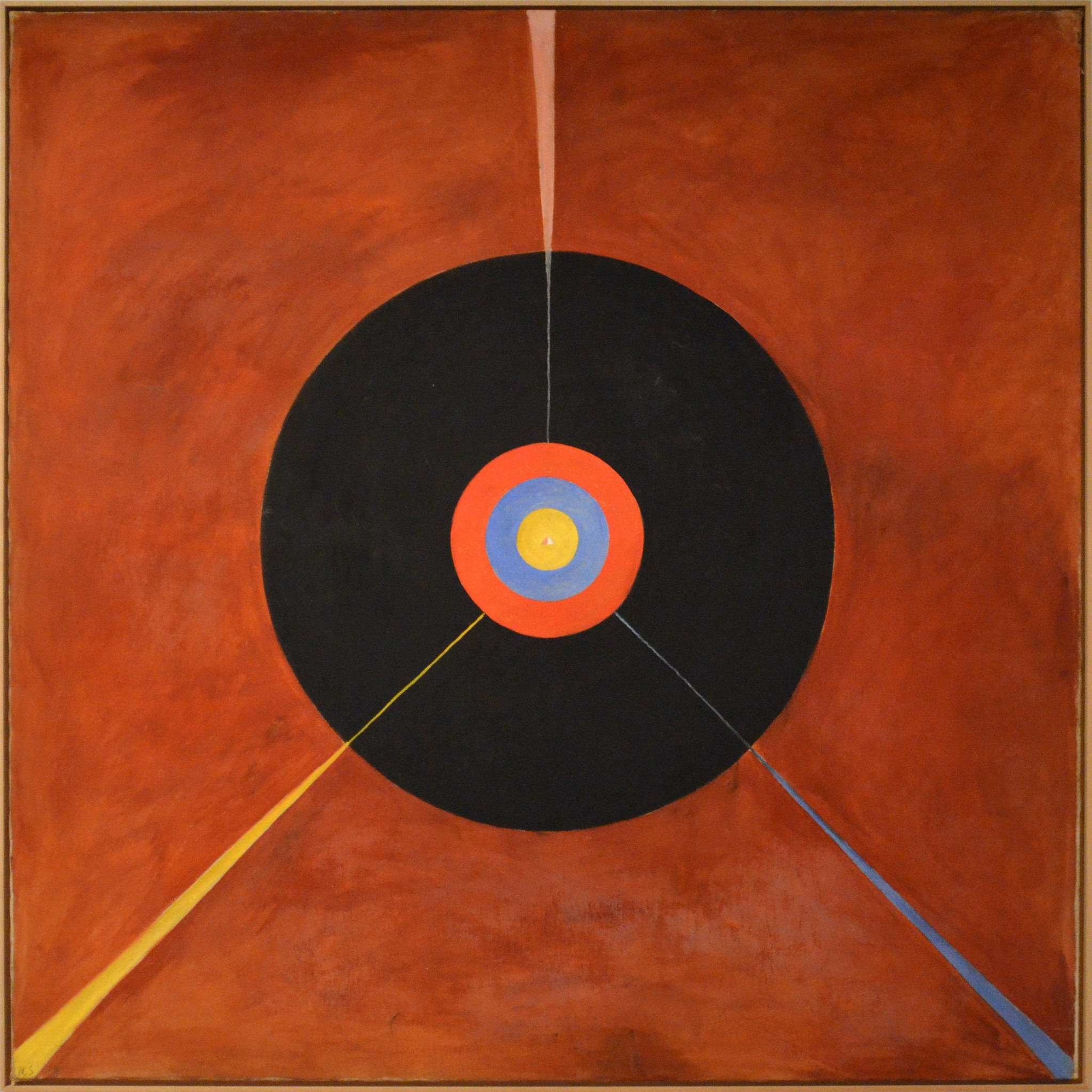Hilma af Klint (October 26, 1862-October 21, 1944) was a Swedish artist and mystic whose paintings were amongst the first abstract art. A considerable body of her abstract work predates the first purely abstract compositions by Kandinsky. She belonged to a group called “The Five” (a circle of women who shared her belief in the importance of trying to make contact with the so-called ‘high masters’ – often by way of séances) and her paintings, which sometimes resembled diagrams, were a visual representation of complex spiritual ideas.
The fourth child of Captain Victor af Klint, a Swedish naval commander, and Mathilda af Klint (née Sonntag), Hilma af Klint spent summers with her family at their farm Hammora on the island of Adelsö in Lake Mälaren. In these idyllic surroundings, Hilma came into contact with nature at an early stage in her life and this deep association with natural forms was to be an inspiration in her work. From her father, she adopted an interest in mathematics.
In 1880 her younger sister Hermina died and it was at this time that the spiritual dimension of her life began to develop.
She showed an early ability in visual art and after the family had moved to Stockholm she studied at the Academy of Fine Arts for five years during which time she learned portraiture and landscape painting . Here she met Anna Cassel, the first of the four women with whom she later worked in ‘The Five’ (de fem), a group of artists who shared her ideas. Her more conventional painting became the source of her financial income while the ‘life’s work’ remained a quite separate practice.
The project on which “the Five” were engaged involved, in 1892, recording in a book a completely new system of mystical thought in the form of messages from higher spirits. One, Gregor, spoke thus: “all the knowledge that is not of the senses, not of the intellect, not of the heart but is the property that exclusively belongs to the deepest aspect of your being…the knowledge of your spirit”.
It is interesting to note that af Klint’s work ran parallel to the development of abstract art by other artists such as Mondrian, Malevich and Kandinsky who were, like af Klint, inspired by the Theosophical Movement founded by Madame Blavatsky. Af Klint’s work can also be seen in the wider context of the modernist search for new forms in artistic, spiritual, political and scientific systems in the beginnings of the 20th century.
Through her work with the group, ‘the Five’ af Klint created experimental automatic drawing as early as 1896, leading her towards an inventive geometric visual language capable of conceptualizing invisible forces both of the inner and outer worlds. Quite apart from their diagrammatic purpose the paintings have a freshness and a modern aesthetic of tentative line and hastily captured image: a segmented circle, a helix bisected and divided into a spectrum of lightly painted colours. She continued prolifically to add to the body of work amounting to over 1000 pieces until 1941. She requested that it should not be shown until 20 years after the end of her life.


















Wow. I have not seen some of these. They are wonderful!!! Look at that size!!!!
Wonderful! More inspiration and beauty.
Thanks so much for sharing Thomas!
That picture of the artist makes you think the work would be serious and meticulous. Who knew. I can’t fit it’s anywhere in the 19th century. Imagine it in one of those big drawing rooms? Brilliant